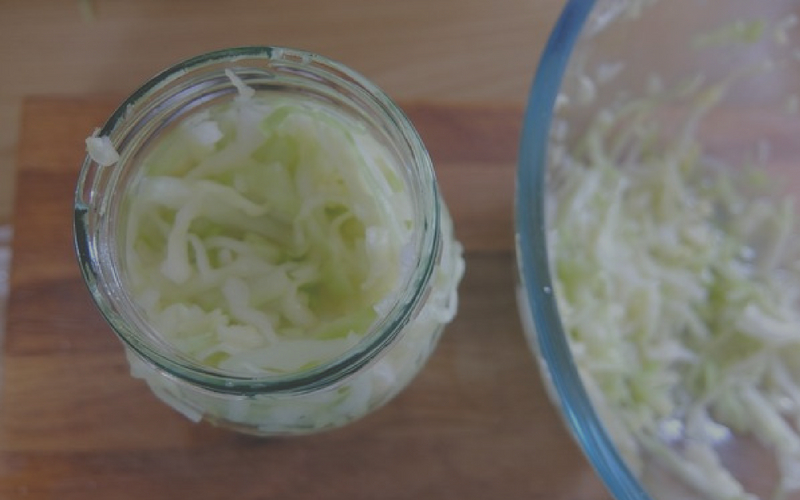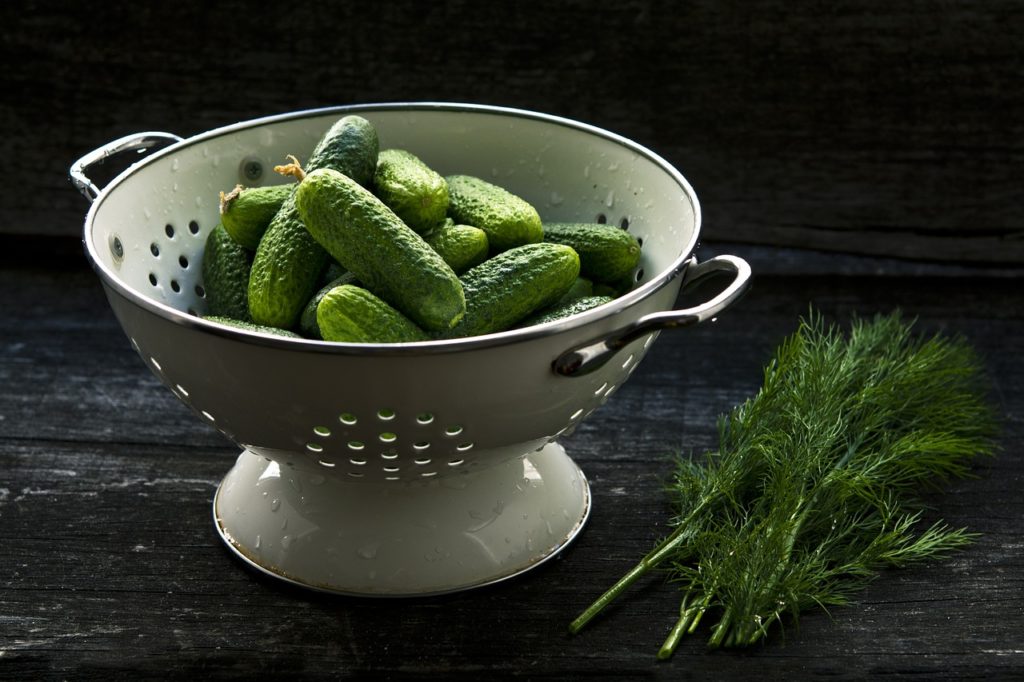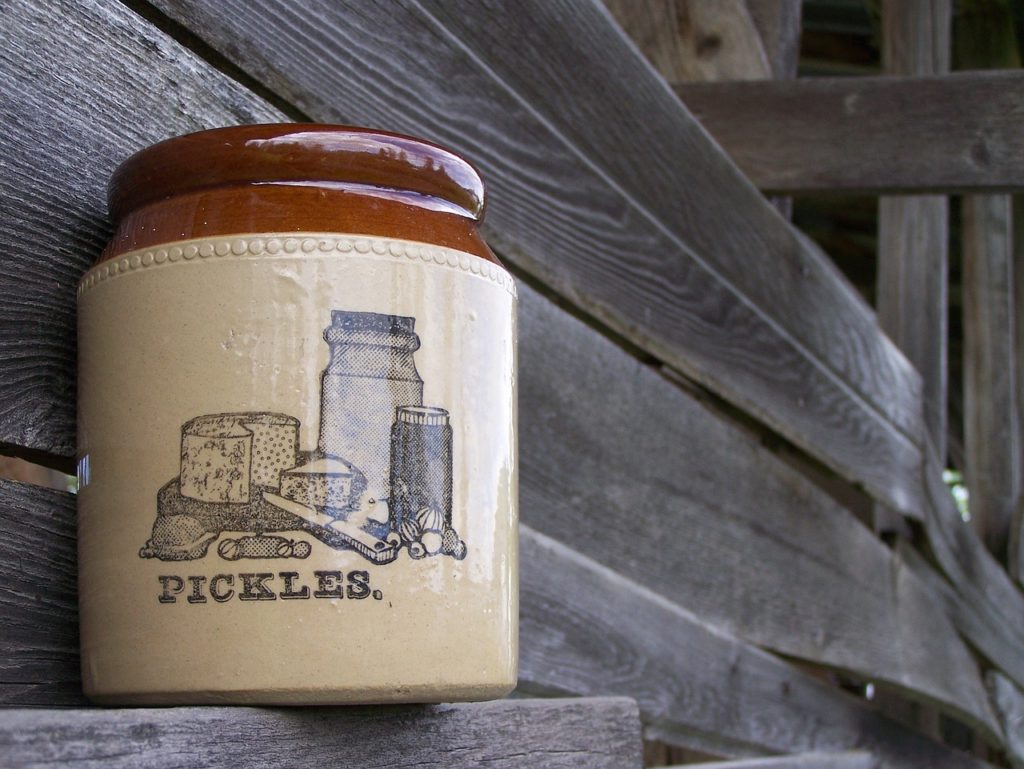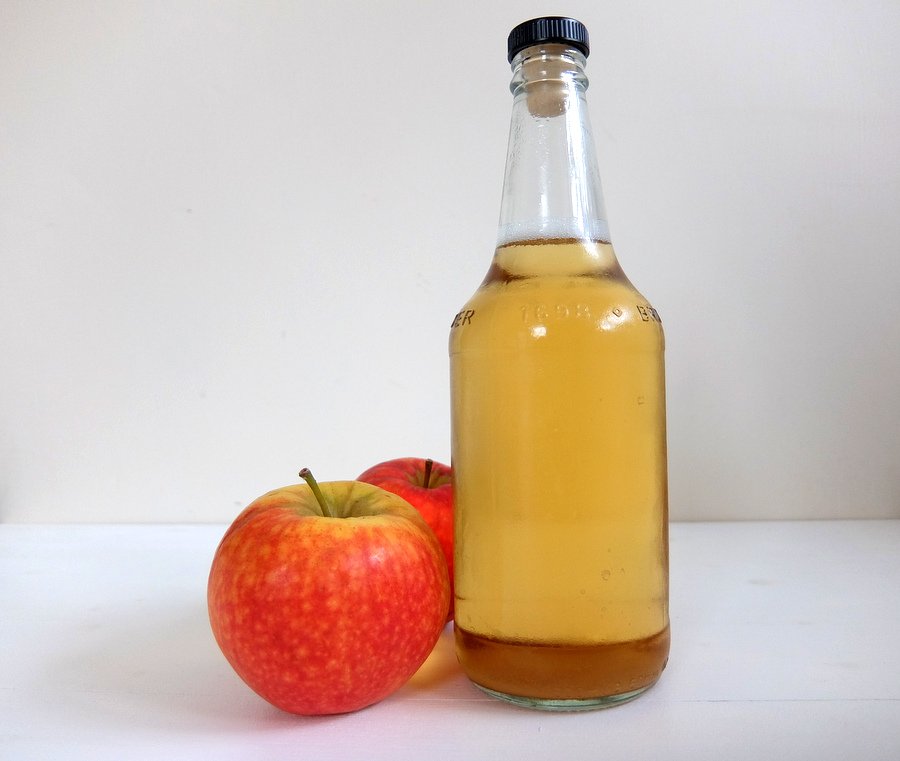Fermenting fruits and vegetables can seem like a mysterious process when you make your first attempts.
There are all sorts of questions you ask yourself, “Is this right?”, “Should it smell like this?” and so on. When a weird layer of white film appears on the surface of your ferment most people chuck the whole lot and start again. The answer might simply be that kahm yeast has developed on your ferment.
Kahm yeast is a term for a number of harmless yeasts that have a tendency to grow on top of ferments when the pH reaches a certain level. Kahn is the term used to describe yeast and if you consider that we use all kinds of different species of yeast in our other foods, you can reassure yourself if it does appear on your ferments it is not going to ruin everything.
The thing is though we need to know the difference between kahm yeast and things like mould. Also if kahm yeast does appear what you should do to control it.
Table of Contents
What Does Kahm Yeast Look Like?
Click here for images of Kahm Yeast
Although Kahm yeast can consist of multiple different species of yeast such as Pichia, Hansenula, Debaryomyce, Mycoderma and Candida, Kahm yeast always shows itself with the same signs so it should be easy enough to identify.
The appearance of Kahm yeast will have the following features:
- White appearance.
- Formation of a pellicle or film on the surface of the brine or ferment.
- Smooth or crepe paper appearance with no fuzz.
- No growth below the surface of the brine
All of these features are typical of yeast growth in your fermenting vegetables. At first glance, you may think that this may be a mould rather than a yeast but mould is quite different and easy enough to tell apart from kahm yeast.
Differences Between Kahm Yeast and Mould?
Mould is quite different from kahm yeast when you look closely enough. It is important to be able to tell the difference between the two because mould in a ferment is not good and you are better off throwing away the fermenting vegetables and starting again.
Mould is easy to identify and you should be able to tell from the following characteristics:
- Mould can be green, blue or white in appearance.
- Is fuzzy or hairy in texture rather than smooth.
- Any growth beneath the surface of the ferment.
How To Prevent Kahm Yeast?
The best solution to the problem of kahm yeast is prevention. Stopping the appearance of undesirable yeast is better than trying to control it after it has appeared in almost all cases.
Thankfully preventing the growth of kahm yeast is simple if you follow a few simple rules and have the right equipment so let’s take a look at how to stop kahm yeast from rearing its head.
Using Airlock Fermentation Jars: Using a fermentation jar with an airlock is one of the easiest ways to prevent kahm yeast from growing as it removes one of the requirements for its growth; oxygen. In an airlocked jar the surface of your ferments is protected by a layer of carbon dioxide.
Kahm yeast requires oxygen to grow and this is why they grow on the surface of ferment. Removing oxygen from your ferments by using an airlock fermentation jar greatly inhibits the chance for the yeasts to grow.
Using Enough Salt: Salt inhibits the growth of yeasts, bacteria and other undesirable microbes in your ferments and at the correct level only the desirable lactobacillus will be able to get a strong foothold. Ensuring you follow the recipe or using the right percentage of salt will inhibit the growth of any kahm yeast.
Keeping Everything Submerged: Make sure any fruit or vegetables in the ferment are fully submerged, this is imperative for proper fermentation but also to stop any growth on the surface of the ferment which is exactly where kahm yeast grows.
I highly recommend using fermentation weights as the most efficient and effective way to manage this issue.
Encourage A Rapid Start Fermentation: The easiest way to do this is to thoroughly chop or shred the produce you are fermenting into smaller pieces. The larger surface area will encourage lactobacillus to grow quickly and out-compete kahm yeast as well as other bacteria.
Use Thoroughly Cleaned Equipment: Keeping all of your equipment as clean and sanitary as possible will make it much harder for kahm yeast or undesirable microbes from establishing themselves in your ferments. I recommend using the sanitise setting on your dishwasher if you have access to one or using really hot soapy water to clean your equipment.
What To Do If You Have Kahm Yeast In Your Ferment?
This is not to say it won’t affect the flavour or smell. You have two option here, you can either:
- Skim the yeast off, finish the ferment and seal.
- Throw it away and start again.
If you do decide to keep the ferment you should skim the kahm yeast off as much as possible and once the ferment has finished you should seal the jar with a lid to remove oxygen and eat fairly quickly.
Kahm yeast has a tendency to keep reoccurring if you leave it for too long and it will alter the flavour and taste given enough time so you will want to consume the ferment as soon as possible.





Wondering if the high heat of canning the Kraut will kill the Kahm yeast?
It will kill it but it needs to be removed first or it will cause off flavours.
Never had a problem with Kahm yeast, but just in case I mix a little vinegar and baking soda in a Glass measuring cup and pour the co2 it gives off into the head space before attaching a airlock. It works for me.
Thanks for the helpful article.
Will Kahm yeast appear in a sauce after processing and canning?
It should not appear after processing and canning. If yeast is growing on the surface of your sauce the seal of your jars may be compromised.